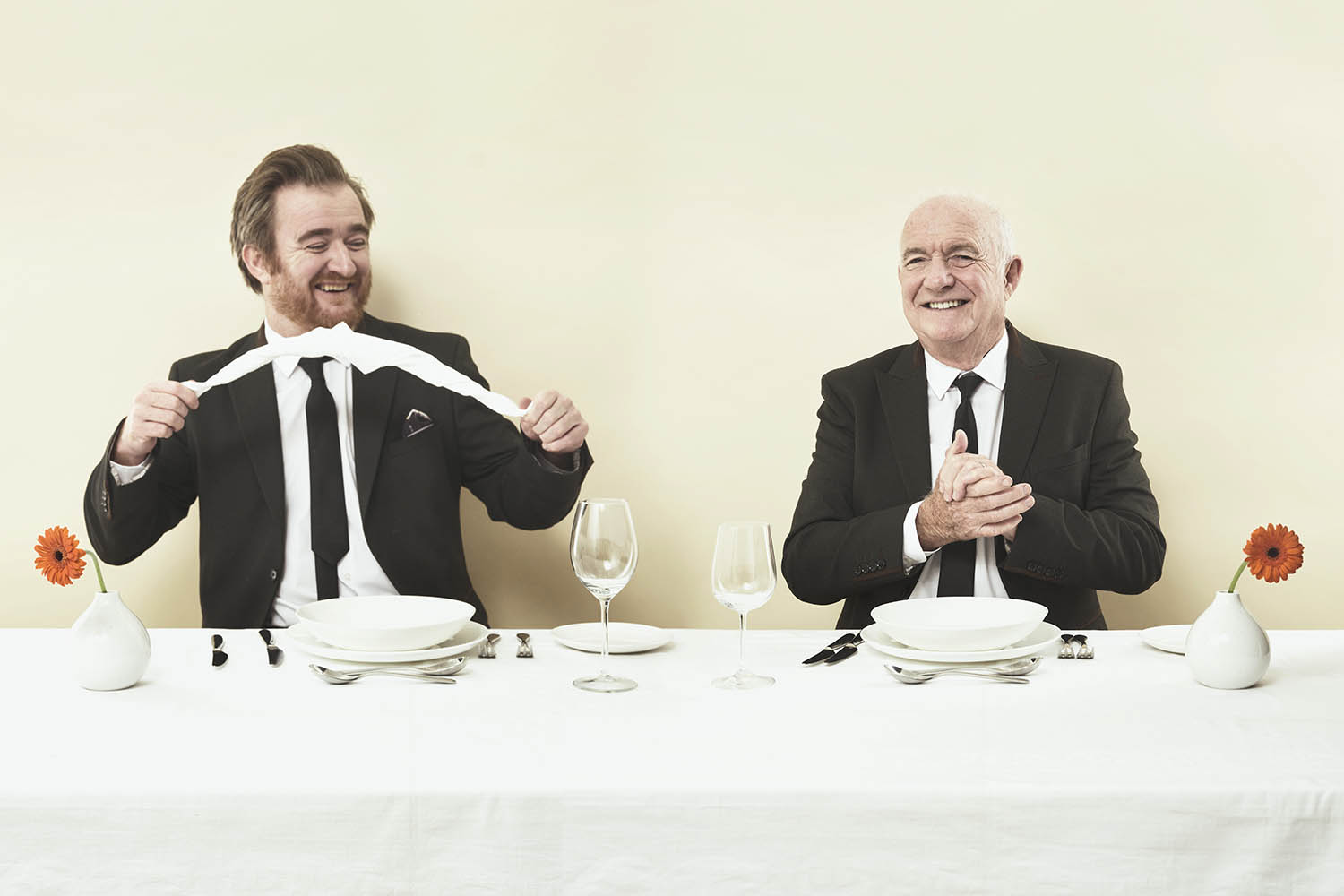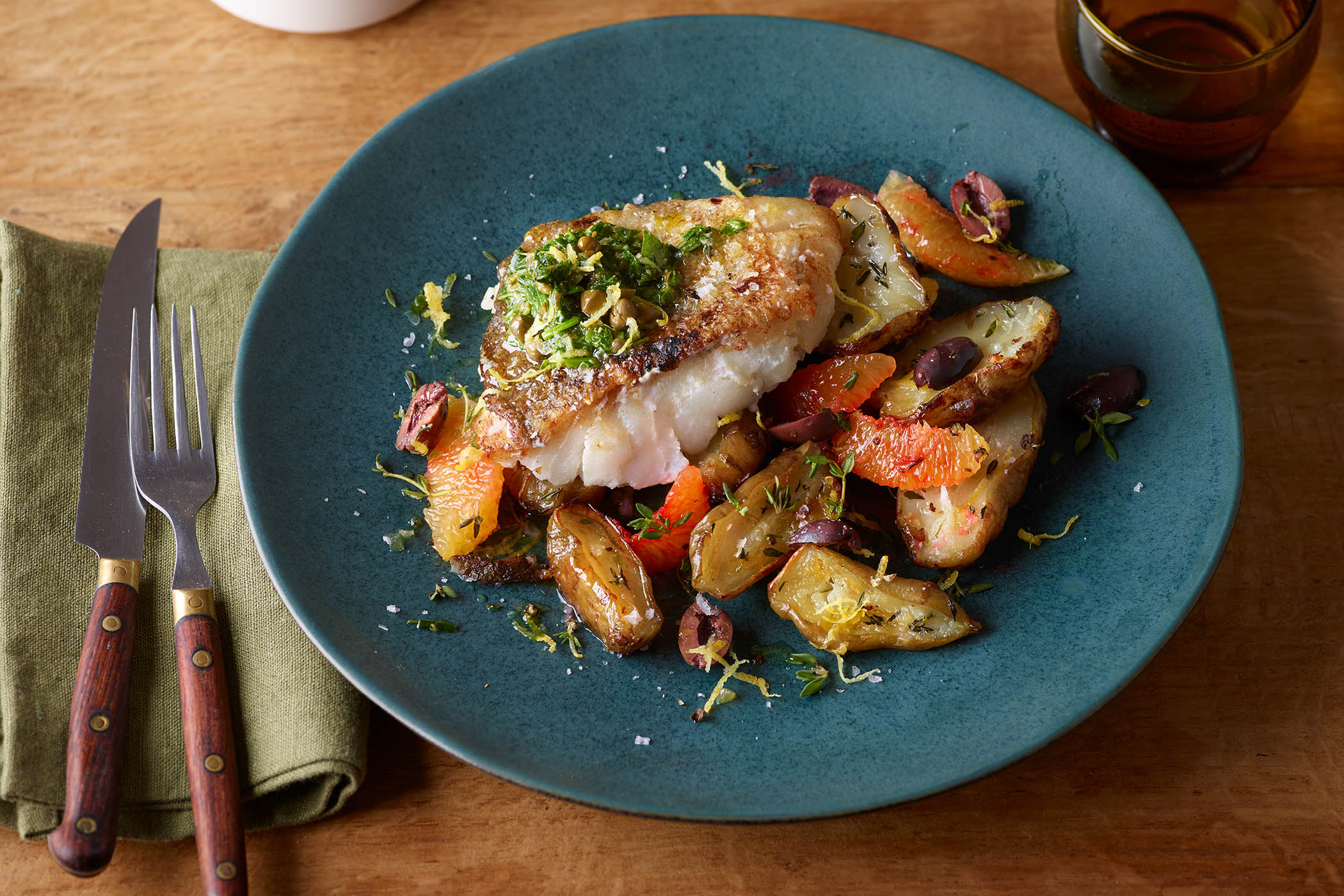Portraits by Phil Fisk
Food Photography by James Murphy
The Stein family might have built an empire on fish but they’re not so good at catching it. Rick and his three sons, Edward, Jack and Charlie – all now in their forties – take an annual trip to some watery idyll each year, but they failed to catch a salmon in Iceland, which most can do blindfolded. Jack thought he had one, but there were sea trout in the pool too and he couldn’t tell which was which. Rick jumped in to help net the creature, still recovering from the open heart surgery he had in 2022. “I said, ‘What is it, Dad, a salmon or a sea trout?’ And he said, ‘I’m fucked if I know.’”
The next boys’ weekend is in May, to Scotland. It is a wonder to them that they can still find a time to go, when all the boys have children and there are so many restaurants to run. Jack is at the helm of food, having been promoted to chef-director of the Stein restaurants in 2017; Charlie does the wine and Ed is in charge of buildings. They couldn’t handle a city break, father and son explain, because they would be around too many restaurants. They swear that, rods in hand, they won’t talk shop – but this is clearly untrue, because the tentacles of their brains connect through the medium of oysters, salad farms and culinary men with one name – this is a kind of sprawling, informal business meeting rather than an interview.
“I had to speak to Roy today … that chef Johnny was there the other night … remember when we were taking on the Cornish Arms and that guy Turkey said don’t touch my stool!” Rick is “the old man” and the famous Padstow restaurant is the Seafood.
Related articles:
The Seafood is 50 years old this year: the week we meet, to celebrate, they drop the rates on their online shop to 1975 prices, referring to one of Rick’s old handwritten menus. One of the dishes is lobster thermidor priced at £2.80 – “bit of an own goal”.
Theirs is a dynasty built by accident, and by the intention of its founders Rick and Jill – who divorced in 2007 but still run it together – to get out of the kitchen, and front of house, as quickly as possible and delegate to someone else. They got their first customers by going around caravan sites with a loudhailer: now there are five other restaurants in Cornwall, four elsewhere in the UK and two in Australia, where Rick spends much of his time, since he married his second wife, Sarah Burns. The Seafood was originally a 1970s nightclub with Rick on the decks: the week after we meet, he does a DJ set there – vinyl only, of course – under his former moniker, the Purple Tiger. He kicks off with American Woman, which Sarah bought him for Valentine’s day.
DJing, like his hit TV appearances, allowed Rick to present the surest version of himself. He and Jack are empirical proof that we turn into our parents as we get older, Jack is the more vocal, with perhaps a more obvious ease. They tell stories, such as the last time Rick cooked in the Seafood’s kitchen, several years ago.
“It was hilarious,” says Jack. “I was on veg, and John Walton, who is now Paul Ainsworth’s executive chef, was on mains, and there was Singapore chilli crab on the menu. Dad came in and, let’s be honest, when Dad used to come in, the kitchen did slow down a little bit. There was something wrong with the dish and he said, “I’m going to cook it for you.” In the time it took him, the check machine had gone to the floor. John had to cook I don’t know how many covers, and I was putting up veg at a speed I’ve never seen before!”
“Jack thinks so quickly, and I think so slowly,” says Rick: his obsessive attention to “simplicity” is the foundation of his food. His son started in the kitchen at the age of 14 in 1993, pot washing to raise money for a tennis racquet. Rick would come up and blitz through the pile for him: “It was Dad’s decision whether a pot was clean enough, you know?
“The restaurant in the early days was what took my parents’ attention,” says Jack. “As kids, you’re like, ‘Where are they going every night?’ Then you go in there yourself, and you realise it’s a sort of physical thing, rather than an emotional thing.”
In the winter they would close up shop “and we’d get pure Mum and Dad time, which was great at first and then became a bit tiring.” They travelled the world together: to this day, Asia, its smells, its humidity, is noise and its tastes are deeply evocative of Jack’s childhood.
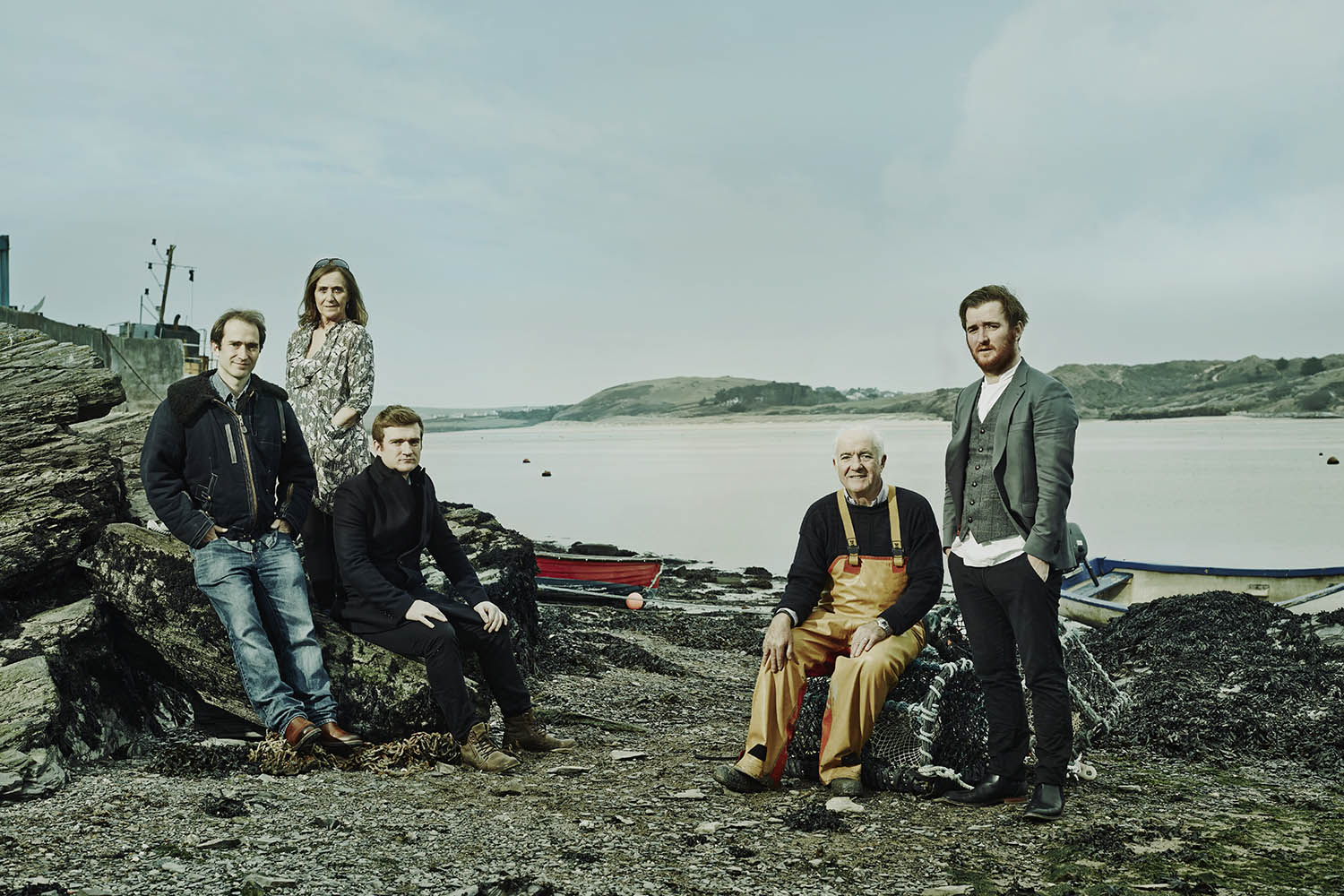
Around the edges of their conversation are glimpses of Rick in his tougher days. There is a lot of chat about the era in which he would throw people out of his restaurants.
“I didn’t often.”
“He says he didn’t often, but my friend’s parents went three times, and every single time Dad threw someone out. So maybe they just happened to be there the three times he threw somebody out.”
The throwing out of rude customers was partly to protect Jill on front of house, but it was also a feature of the age: Gordon Ramsay threw AA Gill out of his Chelsea restaurant in 1998.
“These days, if our staff behave the way I behaved, we’d be down on them,” says Rick. “I used to get really overtired and, a lot of the time, to be honest, when I lost it in the kitchen, it was basically because it was disorganised, and it was probably my fault.”
“It’s always the chef’s fault,” Jack says. “I get very, very upset when it’s my fault, and I know I’ve got no one to blame but myself.”
They talk about this cheffing phenomenon as “going down into the weeds”: a chef knows that he’s messed up but does everything he can to blame someone else. “You lose all spatial awareness,” says Jack. “I remember this one chef, and he just looked me in the eye, and said, ‘I don’t know where I am.’”
Rick Stein’s brother, John, is a neuroscientist at Oxford whose research stretches from dyslexia to the mindsets of the military. He comes into the conversation a lot. Like many chefs, the Steins think about the psychology associated with their profession. Many are dyslexic, they think (“Cheffing is about visual imagination, conceptual”), and lots of people drawn to the kitchen are looking to be part of something bigger. “The one thing is, in the kitchen, you’re never lonely,” says Rick.
When I ask them what Rick did right in getting his three children to join the business, they explain that the industry was a lot sexier by the time the boys joined it. “People listen to chefs now,” says Jack. “You have to know about geopolitics and sustainability.”
“Yes, you’re quite rightfully taken to be somebody with a brain, you know?” Rick says.
When he began his Padstow venture in his early twenties, a friend asked him, “Why are you doing something third rate like hospitality?” Rick had read English literature at Oxford, graduating in 1971, but he had failed his A-levels the first time, eventually achieving two E grades at a college in Brighton. This was unsurprising – in his final year of school, Rick’s father Eric, who suffered from bipolar disorder, had taken his own life in Cornwall. Rick left that behind and spent many months roaming around Mexico, Australia and New Zealand, doing menial jobs – the wanderlust would never cease.
It was all different for Jack. He did some of his training in the three-Michelin-starred restaurant of Michel Bras, once voted the most influential chef in the world, in the mid-Pyrenees: “The place I looked up to beyond any other.” He assisted in the preparation of beautiful vegetal pieces such as the collage-like “gargouillou” (“an impressionistic piece of art”) but later said there were whole bits of the mindset he didn’t understand.
“I realised that Dad was right all along when he said the simple things are best.”
Michel’s son Sébastien, who took over from his father as Jack will take over from Rick, shocked the food world in 2017 when he gave back his Michelin stars, tired of the pressure. “But Michelin keep trying to give them back!” Have the Steins ever had one?
“No.”
Do they want one?
“Not really.”
“Michelin gives to people who are driven in a different way to me and you, Dad,” Jack tells him. “They’re obsessive-compulsive about tiny details. It forces them into a funnel.” They love Heston Blumenthal: “God, he’s a bright boy, isn’t he?” says Rick. But in summary, Jack says, it’s not about stars when you’ve got TV shows: Rick’s 1995 show Taste of the Sea was the making of him, and the empire: “There’s no doubt about it, when you went on TV, Dad…”
My friend’s parents went three times; every time, Dad threw someone out
Rick is now on his phone: “I’m just trying to find this restaurant in Vannas, sorry, I’m listening to every word you say…”
Rick’s big creative legacy is the idea of fresh local produce – in fact, Jack blames him for Brexit: “Unfortunately, Dad, partly your fault – the idea that we can grow everything in England.” All this began in the late 1990s when the food writer and former Egon Ronay inspector Simon Hopkinson went to the Seafood and produced an entire article about the potatoes that were sourced locally at George Trenath’s farm in Trelew. “I was thinking, ‘Why is he so interested in these potatoes?’” says Rick. “It was an early realisation that, actually, of course it mattered.”
Scallops in the half shell were a thumb print, still stuck to the shell “so you know they haven’t come out of the deep freeze”, says Jack. “Jean-Georges [Vongerichten] was doing the scallops with cauliflower raisin puree. Gordon had a version with all the roe taken off – looks beautiful, eats really well, but the old man’s just grilling them with some butter.”
By the mid 2000s, bright young chefs, including Stein alumnus James Knappett, were choosing Cornwall over Billingsgate for their produce “and what they were learning was what Dad and Mum had known all along, that actually, when you know where your food comes from, you can just put it on a plate and tell a story about the person who, you know, made it or grew it or caught it or farmed it”.
Rick’s method, as far as Jack is concerned, is like Chanel’s black dress: “It will always come back in fashion.”
Rick, for all the talk of passing the baton, says that he’s fine, healthwise, after being diagnosed with a defective aorta in 2022. Then he brings up a recent interview which ran under the headline “I’m not going to be around much longer”.
“They cut off the bit where I said, ‘Maybe 20 years if I’m lucky!’”
It is, he admits, terribly hard to let go. “But what you do learn, as you get older, is that people can probably do things better than you.”
His son, also a TV regular now, has plans for a central London site, and – I have heard elsewhere – already knows what he wants to change on the menu. The salt and pepper mix on the steak, for a start. When I bring this up, he puts his head in his hands and goes bright red, and I feel as though I have spilled a family secret. Instantly, he’s a boy again.
“It’s already gone, Dad, it’s gone!”
“I didn’t know that…” says Rick.
“It’s a lovely salt and pepper mix,” says Jack, his cheeks fading back to normal colour. “I just think it would be better to put it on after you’ve cooked the steak. The problem is, if you put black pepper on a chargrill, it can get quite acrid. And when you’ve got a nice dry-aged piece of beef that’s from a Dexter cow that’s lived its whole life on Bodmin Moor, you know…”
“All right, all right, all right!”
Five dishes for five decades with Rick Stein
by Hayley Myers
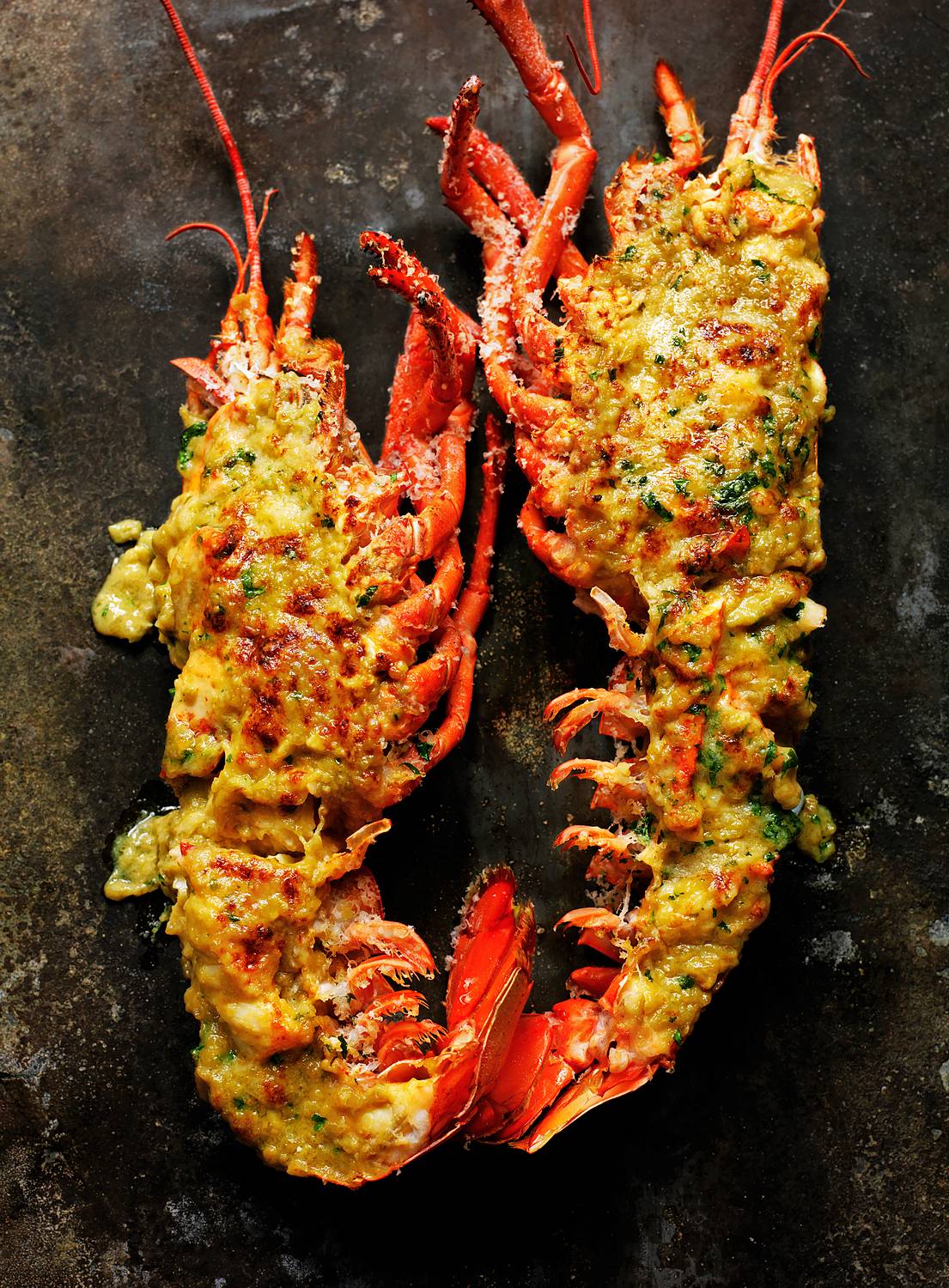
Lobster thermidor
This dish goes right back to the beginning, in 1975. After five years I took against it; the lobsters we were getting were so beautiful there wasn’t much we needed to do other than grill them. The thermidor that returned in the mid 1990s was more nouvelle cuisine-like with a lighter veloute. You can’t help but want to hoover it up, even at the enormous expense.
Newlyn fish pie
It isn’t a traditional fish pie: instead of mash on top it’s gratinated with panko breadcrumbs, there’s truffle oil in there which makes it bougie, and a lot of onion, slow cooked without colour, which adds sweetness. The idea was to be hyper-local, only using fish from Newlyn, but you can use whatever’s in the market that week. It’s quite special.
Hot shellfish
An unofficial signature starter. It’s been on the menu since the 1980s and is synonymous with a time when we were becoming more adventurous, persuading people to eat with their fingers. I love the conviviality of a group of people picking through shells, drinking wine. We used to put a winkle picker pin on the plate, but they kept getting caught in the dishwashers.
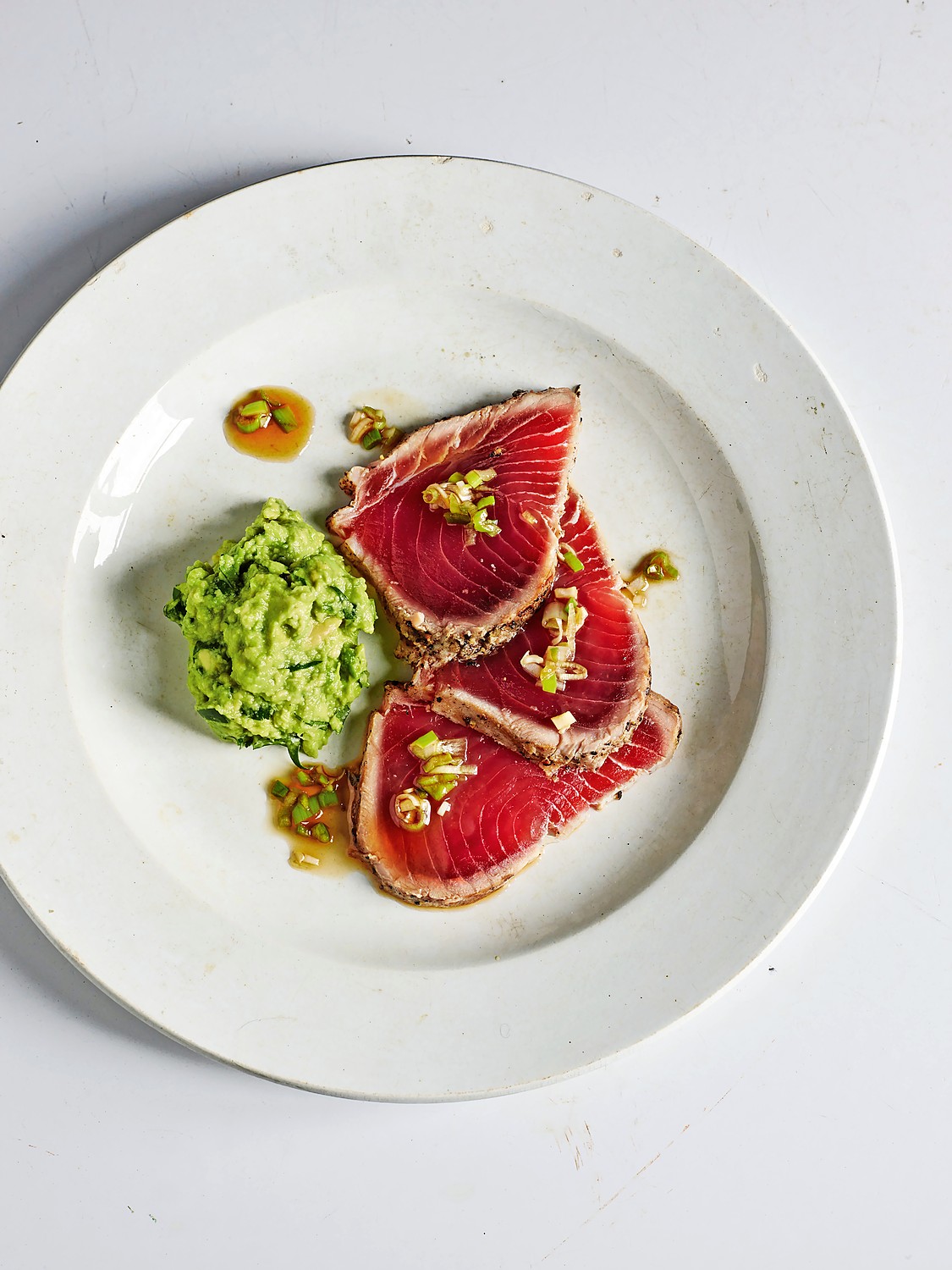
Seared tuna with guacamole
Because of the bluefin tuna we get from the coast of Cornwall in the autumn, this has come into its own. Seared on the outside with an undercooked (raw) middle: heaven. Diana Kennedy, who wrote many books on Mexican cuisine, first made the guacamole for me. She said it should be lumpy and made with a molcajete, a Mexican mortar and pestle.
Dover sole meuniere
To my mind, this and the turbot with hollandaise sauce are the two perfect fish dishes. I don’t think there’s a person in this world who wouldn’t love it. It’s firm, it peels away from the backbone easily, it has a lovely flavour. It’s been on the menu for 50 years; hopefully my sons don’t lose enthusiasm for it.
